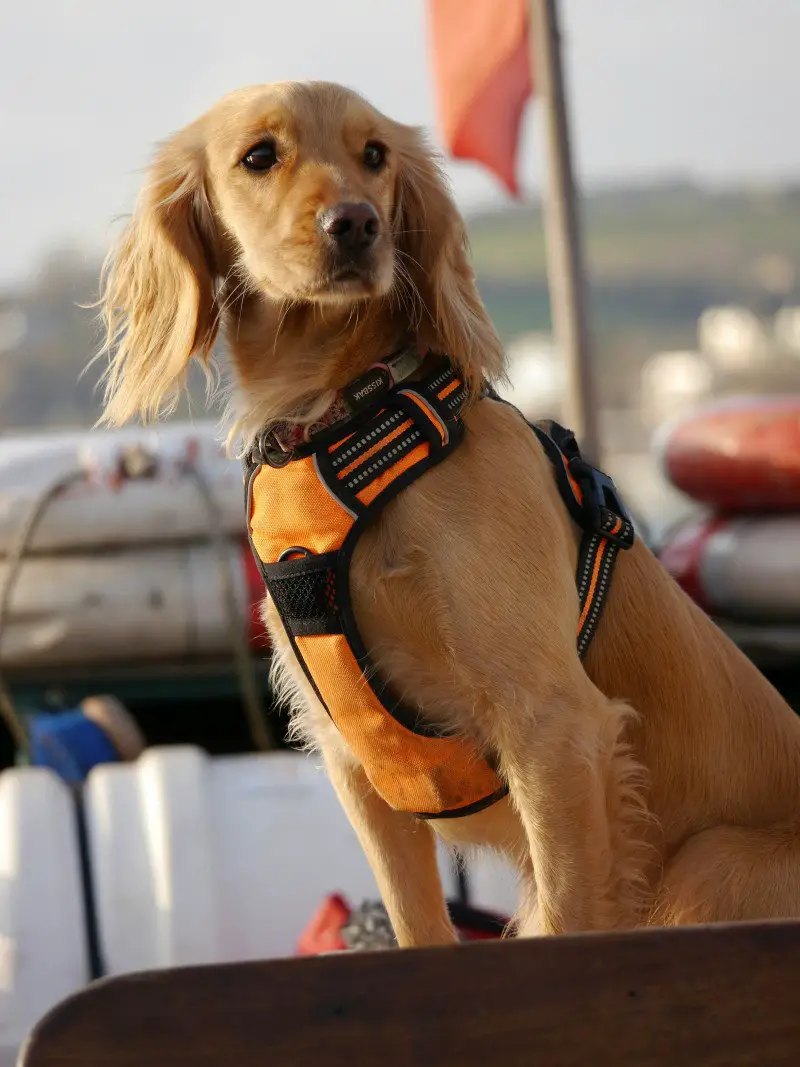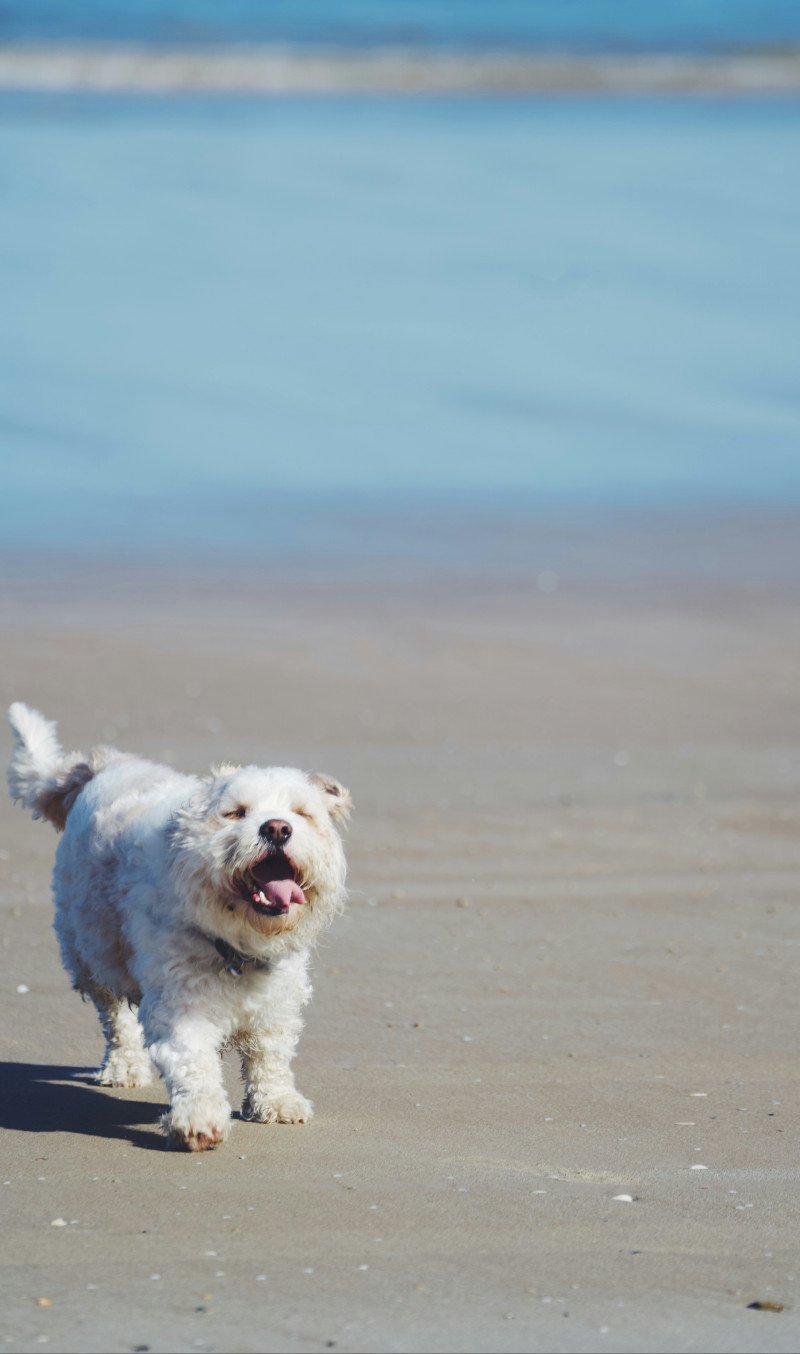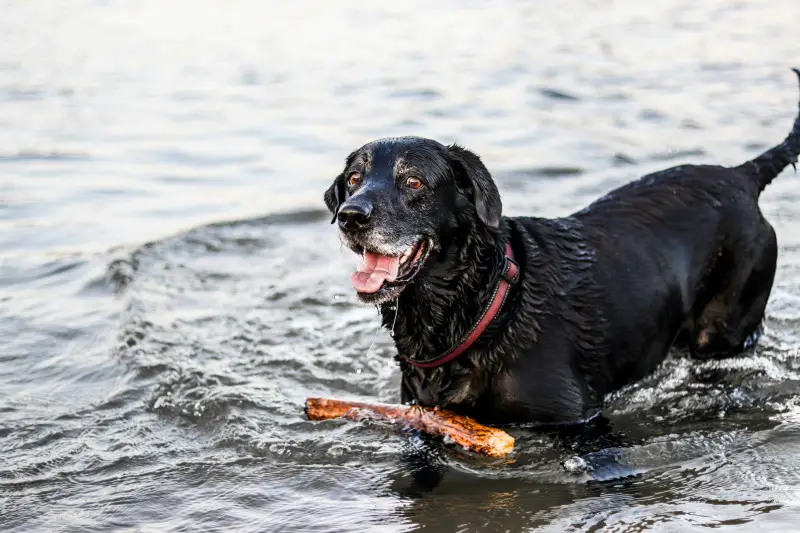As a dog owner, ensuring the safety of your furry friend is always a top priority, especially when it comes to water environments like pools, lakes, and beaches. These places can be a source of endless fun and exercise for your dog, but they also come with their own set of unique challenges and risks. Understanding how to keep your dog safe around water is crucial for a worry-free and enjoyable experience. One of the first things to consider is the specific environment your dog will be in. Pools, for instance, might seem like a controlled and safe space, but they can pose significant risks if your dog isn’t a strong swimmer or if the pool isn’t properly secured. On the other hand, natural bodies of water like lakes and beaches come with their own hazards, such as strong currents, sharp objects, and even harmful algae. Each setting requires a different approach to ensure your dog’s safety. It’s not just about preventing accidents; prioritizing dog safety around water also means being prepared for emergencies. Having a pet emergency plan in place can make all the difference in a critical situation. This includes knowing basic pet first aid, having the right dog safety gear, and understanding the specific risks associated with each type of water environment. Moreover, creating a dog-friendly environment around water can enhance the overall experience for both you and your pet. This involves more than just supervision; it means equipping your dog with the right tools and training to navigate these spaces safely. From dog safety harnesses to safe dog toys designed for water play, there are numerous ways to make water activities safer and more enjoyable for your dog. For those who love to travel with their pets, understanding dog safety is even more crucial. Whether you’re planning a trip to a beach or a lakeside cabin, knowing how to keep your dog safe in these new environments is essential. For more tips on traveling with pets, check out our detailed guide on [dog safety](https://sweetdoggo.com/what-are-the-pros-and-cons-of-traveling-with-pets/). In the following sections, we’ll dive deeper into the specific safety measures you can take to protect your dog around pools, lakes, and beaches. By the end of this guide, you’ll be well-equipped to ensure your dog’s safety and well-being, no matter where your adventures take you.
Table of Contents
Swimming Abilities and Gradual Introduction
When it comes to dog safety around water, understanding your dog’s swimming abilities and introducing them to water gradually is crucial. Not all dogs are natural swimmers, and some breeds face specific challenges that can make swimming more difficult or even dangerous. Let’s dive into the details to ensure your furry friend is well-prepared for water adventures.
Breed-Specific Challenges
Physical Traits Affecting Swimming
Different dog breeds have varying physical traits that can significantly impact their swimming abilities. For instance, breeds with short legs and heavy bodies, like Bulldogs and Pugs, often struggle to stay afloat. Their body structure makes it difficult for them to paddle effectively, increasing the risk of fatigue and drowning. On the other hand, breeds like Labrador Retrievers and Newfoundlands are natural swimmers, thanks to their webbed feet and strong, muscular builds. Understanding these breed-specific challenges is the first step in ensuring your dog’s safety around water. If your dog belongs to a breed that isn’t naturally inclined to swim, you’ll need to take extra precautions and possibly avoid deep water altogether.
Gradual Water Introduction Tips
Introducing your dog to water should be a gradual process, especially if they are new to swimming. Start with shallow water where your dog can comfortably stand and gradually move to deeper areas as they become more confident. Use positive reinforcement, such as treats and praise, to encourage your dog to enter the water willingly. One effective method is to let your dog observe other dogs swimming. Dogs often learn by watching their peers, and seeing other dogs enjoy the water can help alleviate their fears. Additionally, using safe dog toys that float can make the experience more enjoyable and less intimidating for your dog.
Signs of Discomfort or Fear in Water
It’s essential to recognize the signs of discomfort or fear in your dog while they are in the water. Common indicators include excessive panting, whining, or attempting to climb out of the water. If your dog shows any of these signs, it’s crucial to remove them from the water immediately and provide reassurance. Never force your dog to swim if they are clearly uncomfortable. Forcing them can lead to a negative association with water, making future attempts even more challenging. Instead, take a step back and try reintroducing them to water at a later time, using a more gradual approach.
Importance of Supervision
Dangers of Unsupervised Swimming
Supervision is paramount when it comes to dog safety around water. Even if your dog is a strong swimmer, leaving them unsupervised can lead to dangerous situations. Dogs can easily become fatigued, get caught in strong currents, or encounter underwater hazards that can cause injury or drowning. Always keep a close eye on your dog when they are in or near water. This is especially important in natural bodies of water like lakes and beaches, where conditions can change rapidly. Even in a controlled environment like a pool, supervision is essential to prevent accidents.
Risk of “Dry Drowning” and Symptoms
One lesser-known risk associated with swimming is “dry drowning.” This occurs when a dog inhales water into their lungs, leading to respiratory distress hours after leaving the water. Symptoms of dry drowning include coughing, difficulty breathing, lethargy, and blue gums. If you notice any of these signs, seek veterinary care immediately. To minimize the risk of dry drowning, ensure your dog takes regular breaks while swimming and monitor them closely for any signs of distress. Keeping your dog hydrated and well-rested can also help prevent this condition.
Tips for Effective Supervision
Effective supervision involves more than just watching your dog from a distance. Stay close enough to intervene quickly if needed, and be prepared to enter the water if your dog gets into trouble. Having a pet emergency plan in place can make a significant difference in critical situations. Equip yourself with basic pet first aid knowledge, including how to perform CPR on a dog. This can be a lifesaver in emergencies and provide peace of mind while your dog enjoys the water. Additionally, consider using a dog safety harness to have better control over your dog, especially in crowded or unpredictable environments.
Use of Life Jackets

Benefits of Life Jackets for Different Dogs
Life jackets are an excellent investment for dog safety around water, regardless of your dog’s swimming abilities. They provide buoyancy, making it easier for your dog to stay afloat and reducing the risk of fatigue. Life jackets are particularly beneficial for breeds with physical traits that make swimming challenging, as well as for older dogs or those with health issues. Even strong swimmers can benefit from wearing a life jacket, especially in open water where currents and waves can be unpredictable. A life jacket can provide an extra layer of safety, giving you peace of mind while your dog enjoys the water.
Proper Fitting and Features to Look For
When choosing a life jacket for your dog, proper fitting is crucial. A life jacket that is too loose can slip off, while one that is too tight can restrict movement and cause discomfort. Measure your dog’s chest, neck, and length to find the right size, and look for adjustable straps to ensure a snug fit. Key features to look for in a life jacket include a sturdy handle on the back, which allows you to lift your dog out of the water easily, and reflective strips for better visibility. Additionally, choose a life jacket made from durable, quick-drying materials to ensure comfort and longevity.
Training Pets to Wear and Enjoy Life Jackets
Introducing your dog to a life jacket should be a gradual process. Start by letting them wear the life jacket for short periods at home, rewarding them with treats and praise to create a positive association. Gradually increase the duration and encourage your dog to move around and play while wearing the life jacket. Once your dog is comfortable wearing the life jacket on land, introduce them to shallow water while wearing it. Continue to use positive reinforcement and ensure the experience is enjoyable. With time and patience, your dog will become accustomed to the life jacket and feel more confident in the water. By understanding your dog’s swimming abilities, providing proper supervision, and using life jackets, you can significantly enhance your dog’s safety around water. These measures not only prevent accidents but also ensure that your dog enjoys their time in the water, creating lasting memories for both of you.
Water Safety in Different Environments
Ensuring dog safety around water involves understanding the unique challenges posed by different environments. Whether you’re at a pool, beach, or lake, each setting requires specific precautions to keep your furry friend safe. Let’s explore the essential safety measures for each of these water environments.
Pool Safety Precautions
Enforcing Water Safety Rules
Pools can be a fantastic place for your dog to cool off and have fun, but they also come with their own set of risks. One of the most important steps you can take is to enforce strict water safety rules. Make sure your dog knows the boundaries and understands that they should only enter the pool when invited. This can be achieved through consistent training and positive reinforcement. It’s also crucial to establish a routine for pool time. Supervise your dog closely and never leave them unattended around the pool. Even if your dog is a strong swimmer, accidents can happen, and constant supervision is key to preventing them.
Installing Ramps or Fences
Installing a pool ramp or fence is an excellent way to enhance dog safety. A pool ramp provides an easy exit for your dog, reducing the risk of them getting trapped in the water. Make sure the ramp is sturdy and slip-resistant, and train your dog to use it. A pool fence is another effective safety measure. It creates a physical barrier that prevents your dog from accessing the pool when you’re not around. Choose a fence that is tall enough to prevent your dog from jumping over and ensure it has a secure gate that your dog cannot open.
Providing Fresh Water to Prevent Pool Water Ingestion
Dogs often drink pool water out of curiosity or thirst, but this can be harmful due to the chemicals used to keep the pool clean. To prevent this, always provide fresh water for your dog to drink. Place a water bowl near the pool and encourage your dog to drink from it regularly. If you notice your dog drinking pool water, redirect them to the fresh water bowl and reward them for drinking from it. This will help create a positive association and reduce the risk of ingesting harmful chemicals.
Beach Safety Measures

Photo by Raunaq Sachdev on Unsplash
Assessing Water Quality
Beaches offer a wonderful opportunity for your dog to run, play, and swim, but it’s essential to assess the water quality before letting your dog dive in. Contaminated water can pose serious health risks, including gastrointestinal issues and skin infections. Check for any posted signs about water quality and avoid areas with visible pollution or strong odors. Additionally, be cautious of harmful algae blooms, which can be toxic to dogs. If you suspect the presence of algae, keep your dog away from the water and report it to local authorities.
Managing Strong Currents and Hidden Dangers
Beaches often have strong currents and hidden dangers like sharp rocks, broken glass, or marine life that can harm your dog. Before allowing your dog to swim, assess the water conditions and look for any potential hazards. Avoid areas with strong waves or rip currents, as these can quickly overwhelm even the strongest swimmers. Keep your dog close and within your sight at all times. Using a dog safety harness can provide better control and prevent your dog from venturing too far into dangerous waters. If your dog is new to the beach, start with shallow water and gradually introduce them to deeper areas as they become more comfortable.
Protecting Pets from Sunburn with Pet-Specific Sunscreen
Just like humans, dogs can get sunburned, especially those with short or light-colored fur. To protect your dog from harmful UV rays, apply pet-specific sunscreen to exposed areas like the nose, ears, and belly. Avoid using human sunscreen, as it can contain ingredients that are toxic to dogs. In addition to sunscreen, provide plenty of shade and fresh water to keep your dog cool and hydrated. Take regular breaks from the sun and avoid peak hours when the sun’s rays are the strongest.
Lake Safety Considerations
Identifying Sharp Objects or Hazardous Terrain
Lakes can be a serene and enjoyable environment for your dog, but they also come with their own set of hazards. Before allowing your dog to swim, inspect the area for sharp objects like rocks, sticks, or debris that could cause injury. Clear the area as much as possible and guide your dog to safer spots. Be mindful of the terrain around the lake as well. Slippery or steep banks can be dangerous, especially for older dogs or those with mobility issues. Choose a spot with gentle slopes and easy access to the water to ensure your dog’s safety.
Ensuring Water Temperature is Safe
Water temperature is another critical factor to consider when it comes to lake safety. Extremely cold water can lead to hypothermia, while very warm water can cause overheating. Before letting your dog swim, check the water temperature and ensure it’s within a safe range. If the water feels too cold or too warm for you, it’s likely the same for your dog. Limit their time in the water and provide regular breaks to warm up or cool down as needed. Always have a towel on hand to dry your dog off and prevent them from getting too cold after swimming.
Post-Swim Care to Prevent Infections
After a swim in the lake, it’s essential to provide proper post-swim care to prevent infections. Rinse your dog thoroughly with fresh water to remove any dirt, algae, or bacteria that may be clinging to their fur. Pay special attention to their ears, as trapped moisture can lead to ear infections. Dry your dog off completely, especially if the weather is cool. Check for any cuts, scrapes, or signs of irritation and treat them promptly. Regular grooming and maintenance can also help keep your dog’s skin and coat healthy after swimming. By taking these water safety measures in different environments, you can ensure that your dog enjoys their time around water while staying safe and healthy. Each setting presents unique challenges, but with the right precautions and a keen eye, you can create a dog-friendly environment that allows for fun and worry-free water activities.
Additional Tips for Water Activities
Ensuring dog safety around water goes beyond just the immediate environment. There are several additional tips and precautions that can make water activities safer and more enjoyable for your furry friend. From maintaining health and hydration to exploring alternative water activities and post-activity care, these tips will help you create a comprehensive safety plan for your dog.
Health and Hydration
Recognizing and Preventing Water Intoxication
Water intoxication, though rare, is a serious condition that can occur when a dog ingests too much water too quickly. This can happen during vigorous water play or swimming sessions. Symptoms include lethargy, bloating, vomiting, loss of coordination, and in severe cases, seizures. If you notice any of these signs, seek veterinary care immediately. To prevent water intoxication, monitor your dog’s water intake during playtime. Encourage regular breaks and limit the amount of time your dog spends in the water. Providing safe dog toys that don’t encourage excessive water ingestion can also help mitigate this risk.
Providing Regular Breaks and Shaded Areas
Just like humans, dogs can become fatigued and overheated during water activities. It’s essential to provide regular breaks to allow your dog to rest and recover. Create a dog-friendly environment by setting up shaded areas where your dog can cool off and relax. During breaks, offer your dog fresh water to drink and monitor them for signs of exhaustion or overheating. Panting, drooling, and a bright red tongue are indicators that your dog needs a break. Ensuring your dog has a comfortable place to rest will make water activities more enjoyable and safer.
Offering Fresh Water Consistently
Providing fresh water consistently is crucial for keeping your dog hydrated and preventing them from drinking potentially harmful water from pools, lakes, or the ocean. Always carry a portable water bowl and a supply of fresh water when heading out for water activities. Encourage your dog to drink regularly, especially during hot weather or after vigorous play. Hydration is a key component of dog health precautions and helps prevent issues like heatstroke and dehydration.
Alternative Water Activities
Baby Pools for Water-Shy Dogs
Not all dogs are comfortable with large bodies of water, and that’s perfectly okay. For water-shy dogs, a baby pool can be a fantastic alternative. These small, shallow pools provide a controlled environment where your dog can splash around and cool off without feeling overwhelmed. Introduce your dog to the baby pool gradually, using positive reinforcement and safe dog toys to make the experience enjoyable. This can be a great way to build your dog’s confidence around water and provide a fun, safe activity during hot days.
Fun with Garden Hoses
Another excellent alternative for water play is using a garden hose. Many dogs love chasing and biting at the water stream, making it a fun and engaging activity. However, it’s essential to keep playtime controlled and safe. Avoid using high-pressure settings on the hose, as this can be uncomfortable or even harmful to your dog. Instead, use a gentle spray and direct the water away from your dog’s face to prevent water from entering their ears or nose. Always supervise hose play to ensure your dog’s safety.
Keeping Playtime Controlled and Safe
Regardless of the type of water activity, keeping playtime controlled and safe is paramount. Set clear boundaries and rules for your dog, and use positive reinforcement to encourage good behavior. Supervision is key to preventing accidents and ensuring your dog enjoys their time safely. If you’re in a public area, be mindful of other dogs and people. Not all dogs are comfortable with water play, and some may become anxious or aggressive. Keeping your dog on a leash or using a dog safety harness can help maintain control and prevent any unwanted interactions.
Post-Activity Care
Rinsing Off Chemicals, Salt, or Sand
After a fun day of water activities, it’s essential to rinse off any chemicals, salt, or sand that may be clinging to your dog’s fur. Pool chemicals, saltwater, and sand can cause skin irritation and dryness if not properly washed off. Use fresh water to rinse your dog thoroughly, paying special attention to their paws, belly, and any other areas that may have come into contact with irritants. This simple step can help prevent skin issues and keep your dog’s coat healthy and clean.
Drying Ears to Prevent Infections
Moisture trapped in your dog’s ears can lead to painful ear infections. After water activities, take the time to dry your dog’s ears thoroughly. Use a soft, absorbent towel to gently pat the inside of their ears, being careful not to push too deep. If your dog is prone to ear infections, consider using a vet-recommended ear cleaning solution to help remove any residual moisture. Regular ear care is an essential part of pet safety tips and can prevent discomfort and health issues for your dog.
Monitoring for Any Signs of Discomfort or Illness
After water activities, keep an eye on your dog for any signs of discomfort or illness. Symptoms like excessive scratching, redness, swelling, or changes in behavior can indicate an issue that needs attention. If you notice anything unusual, consult your veterinarian for advice. Regularly checking your dog for signs of discomfort or illness is a crucial part of canine safety measures. Early detection and treatment can prevent minor issues from becoming serious health problems. By following these additional tips for water activities, you can ensure that your dog stays safe, healthy, and happy. From maintaining proper hydration and exploring alternative water activities to providing thorough post-activity care, these measures will help you create a comprehensive safety plan for your furry friend. Enjoying water activities with your dog can be a wonderful bonding experience, and with the right precautions, you can make it a safe and enjoyable one.
Conclusion
Water activities can be a fantastic way to bond with your dog, providing both exercise and enjoyment. However, ensuring dog safety around water is paramount to making these experiences positive and worry-free. By understanding your dog’s swimming abilities, taking appropriate safety measures in different environments, and following additional tips for health and hydration, you can create a safe and enjoyable experience for your furry friend. Encouraging pet owners to enjoy water activities safely with their dogs is about more than just preventing accidents; it’s about fostering a sense of trust and confidence between you and your pet. When your dog feels safe and secure, they are more likely to enjoy their time in the water, leading to more fun and memorable moments together. Whether you’re at a pool, beach, or lake, taking the time to prepare and educate yourself on the best practices for dog safety can make all the difference. One of the most rewarding aspects of being a pet owner is seeing your dog happy and healthy. Water activities can contribute significantly to your dog’s physical and mental well-being, offering a great way to burn off energy and stimulate their senses. By implementing pet safety tips and canine safety measures, you can ensure that these activities are both safe and beneficial for your dog. It’s also important to highlight the importance of prompt veterinary attention for any health concerns that may arise from water activities. Even with the best precautions, accidents and health issues can still occur. Recognizing the signs of discomfort, illness, or injury and seeking immediate veterinary care can prevent minor issues from becoming serious problems. Whether it’s a case of water intoxication, an ear infection, or a cut from a sharp object, timely intervention is crucial for your dog’s health and recovery. Regular check-ups and open communication with your veterinarian can also help you stay informed about the best practices for dog safety around water. Your vet can provide personalized advice based on your dog’s breed, age, and health status, ensuring that you are well-equipped to handle any potential risks. Additionally, having a pet emergency plan in place can give you peace of mind, knowing that you are prepared to act quickly in case of an emergency. In conclusion, enjoying water activities with your dog can be a delightful and enriching experience, provided that you take the necessary steps to ensure their safety. By understanding the unique challenges posed by different water environments, providing proper supervision, and following additional health and hydration tips, you can create a safe and enjoyable experience for your furry friend. Remember, the key to a happy and healthy dog is a well-prepared and attentive owner. So, gear up with the right dog safety gear, keep a watchful eye, and dive into the fun with confidence, knowing that you are doing everything possible to keep your beloved pet safe and happy.




